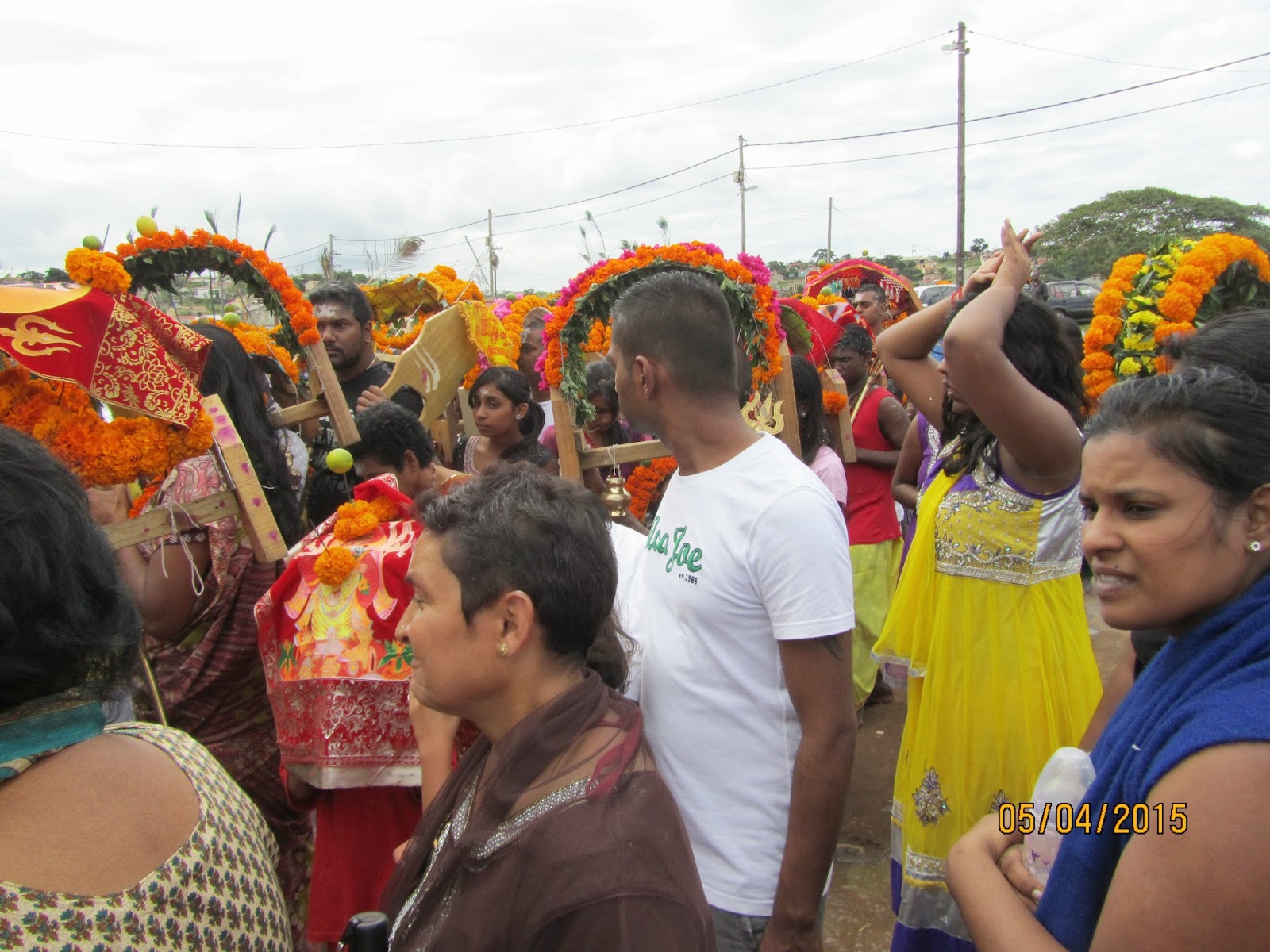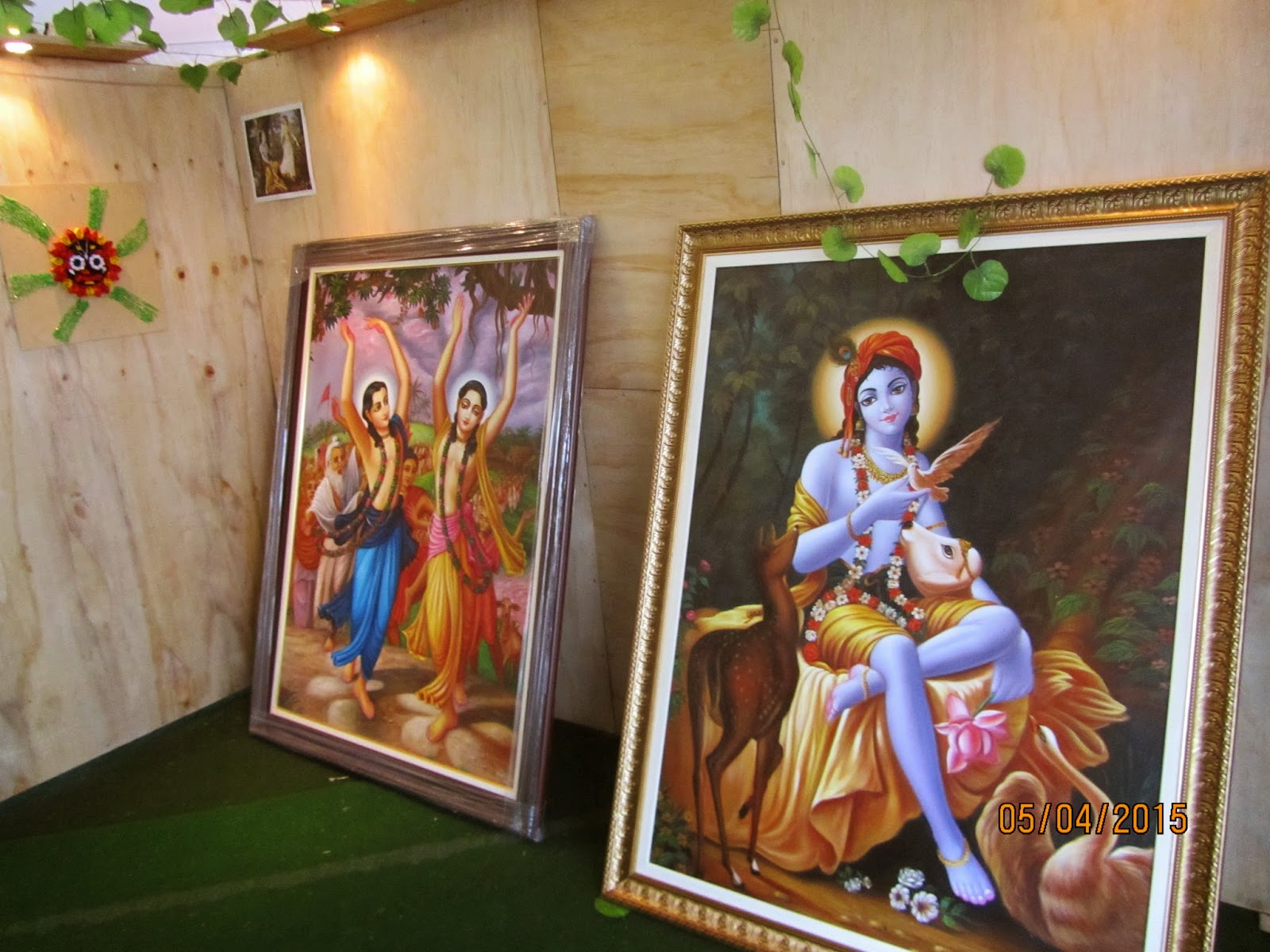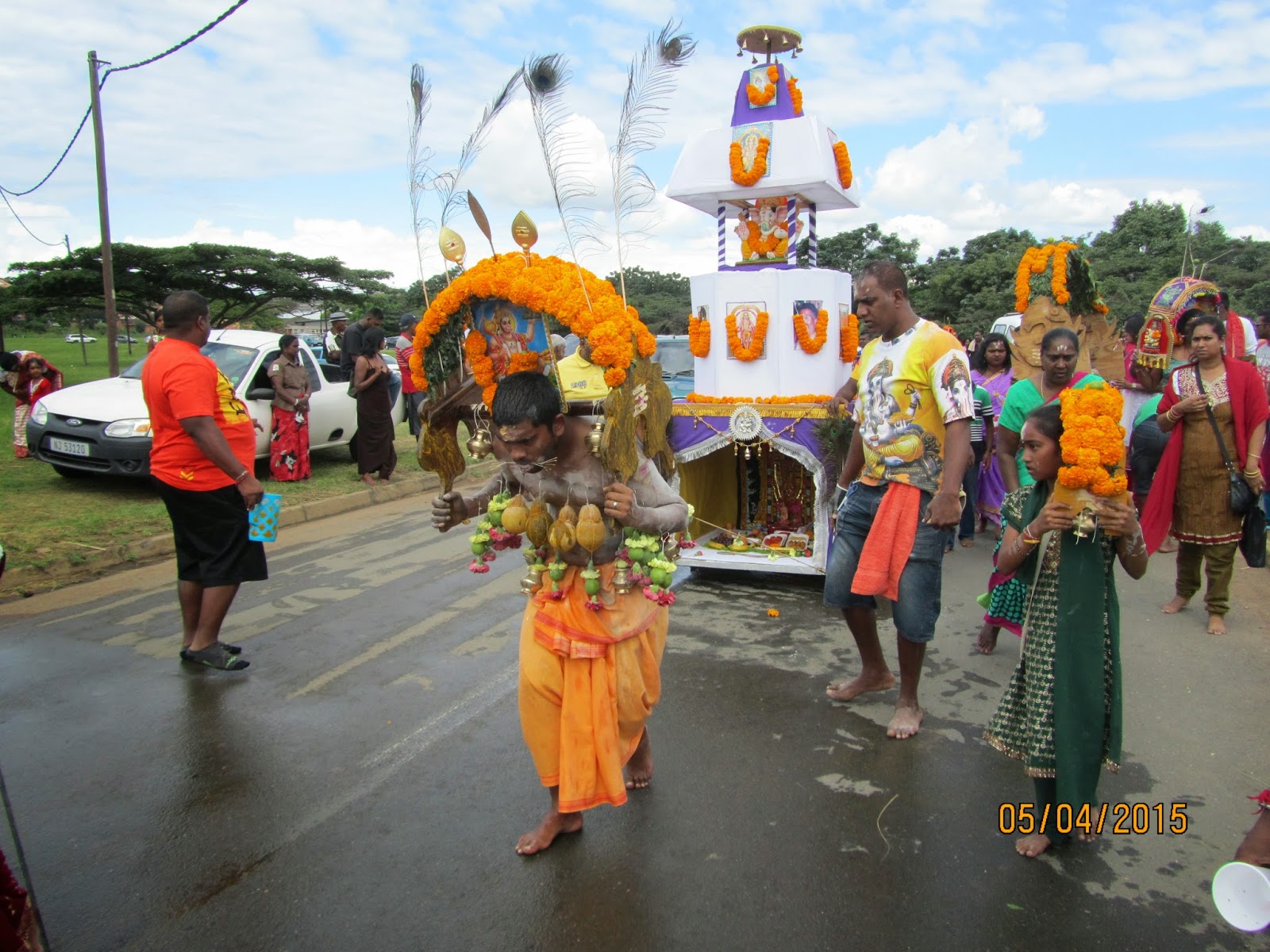From L to R: Mrs Thirupuriesundrie Govender (Board member), Mr Denis Naidoo(asst treasurer), Mr Richard Naidoo(deputy chairperson), Mr Subry Govender (secretary), Mrs Sally Padaychie (chairperson), Mr Swaminathan Gounden (Board member), Mr Sumeshen Moodley (assist secretary), Mr Balan Gounder (Board member and former chairperson), and Mr Logan Naidoo (Board member)
BY SUBRY GOVENDER
Former struggle activist, Mrs Sally Padaychie, has been elected as the new chairperson of Southside FM Radio that is currently negotiating with Communications Minister, Ms Faith Muthambi, for a frequency.
Southside, since its initiation five years ago, has been struggling to obtain a frequency despite being given assurances by ICASA.
Mrs Padaychie, who is the widow of the late Minister Roy Padaychie, was elected at the annual meeting of Southside held in Durban on Saturday, April 18.
Mrs Padaychie was elected after veteran cultural leader, Mr Balan Gounder, stepped down from the chairperson's position.
(Mrs Sally Padaychie (right) addressing government leaders at a meeting in Durban in 2014 about our frequency. Also in the picture are Mr Richard Naidoo (centre) and Mr Logan Naidoo)
Mrs Padaychie said she was currently in negotiations with Communications Minister, Ms Faith Muthambi, and senior officials of the Department of Communications and ICASA.
"This radio station was initiated as a progressive radio station to, in addition to promoting our cultures, lamnguages, music and traditions, we want to promote a spirit of Ubuntu and racial and religious tolerance among all the people in South Africa," Mrs Padaychie told the meeting.
She also said: "At this time when we face the serious situation of xenophobia we could have played a crucial role in promoting tolerance and respect for one another - irrespective of race, ethnicity, citizenship or religion.
"The lack of a frequency is frustrating our efforts."
In addition to Southside members, the meeting was also attended by the president of the South African Tamil Federation, Mr Karthigasen Moothsamy, and his executive officials, Mr Poovendran Govender, Mr Sadha Balakrishnan, and Mr Parie Pillay-Ramaya.
Mr Moothsamy said they fully supported the struggles of Southside and would continue to take up the issue with Government and the ruling ANC.
"We are with you all the way and really appreciate all the hard work that have already been undertaken by your officials," said Mr Moothsamy.
The other officials elected are: Mr Balan Gounder and Mr Richard Naidoo (deputy chairpersons); Mr Subry Govender (secretary); Mr Sumeshen Moodley (assistant secretary); Ms Kersha Govender (treasurer); Mr Denis Naidoo (assistant treasurer); and Mr Richard Govender, Mr Logan Naidoo, Mr Swaminathan Gounden and Mrs Thirupurisundrie Govender.
The meeting also confirmed the Board of Governors, which will be overall in charge of the radio station. The members of the Board are: Mr Balan Gounder, Mrs Sally Padaychie, Mr Logan Naidoo, Mr Subry Govender, Ms Keresha Govender, Mr Swaminathan Gounden, Mr Denis Naidoo and Mrs Thirupuriesundrie Govender.
In his secretarial report, Mr Subry Govender, acknowledged the support of donors who made tremendous contributions to Southside. They include Mr Singaram Nadarajan of Mount Edgecombe; the Merebank Tamil School Society(MTSS); Mr Mickey Chetty, former president of the South African Tamil Federation; Dr Dilly Naidoo; the late Mr Sunny Subban; Mr Nalliah of Johannesburg; Dr Maheshan Pillay; Mr Deva Poonoosami of London; Mrs Sally Padaychie and scores of other donors.
Mr Govender also acknowledged a donation of R200 000 made by a prominent businessman who asked to remain anyonymous.
"We also want to salute the Mount Edgecombe Mariammen Temple and Cultural Centre for being there for us at all times. We greatly appreciate their continued support and for agreeing to provide us with premises for our radio station."
About the delays caused by the lack of a frequency, Mr Govender informed the meeting that the Southside officials had done everything possible to fulfil all the requirements to launch as soon as possible.
"But, despite being promised a number of frequencies at every turn, we are being frustrated in our efforts. We have taken up our fight with all the role players in Government and political and business leaders.
"We are now stepping up our negotiations and will not give up the fight until we obtain our frequency," he said.
Mr Logan Naidoo, a member of the Board of Governors, said he was confident that with the introduction of digital radio and television soon, more frequencies would become available.
"I believe that we would have our frequency within the next six months as the digital format starts," he said.
(Dr Stephen Mncube (second from left), Chairperson of ICASA, Mr Eric Kholwane, former chairperson of the Parliamentary Portfolio Committee on Communications, meeting officials of Southside early in 2014 in Durban where an agreement was reached for a frequency. But this has not yet been implemented)
SECRETARIAL REPORT PRESENTED AT THE ANNUAL MEETING OF SOUTHSIDE FM RADIO AT THE OFFICES OF MR LOGAN NAIDOO ON SATURDAY, APRIL 18 2015
------------------------------------------------------------------------------------------------------
Mr Chairperson, Mr Balan Gounder, other officials and members, it gives me great pleasure to present an up to date report about Southside FM Radio.
When we initiated the project in late 2009 we all were under the impression that this would be an easy project and that we would launch our radio station at the soonest possible time.
We did everything in our power to provide all the necessary documents required by ICASA for our licence and the Department of Social Welfare for our NPO number.
It was a long and arduous journey and after interventions by the late Minister, Mr Roy Padaychie, were were given a letter by ICASA to state that we would be granted a five-year community licence once our frequency was finalised.
Over the years we were offered various frequencies but even after signing the documents and submitting them to ICASA, we were faced with one problem after another.
Since October 2009, we took our fight to various levels, including the former Chairperson of the Portfolio Committee on Communications, Mr Eric Kholwane; Chairperson of ICASA, Dr Stephen Ncube; former Communications Minister, Mr Yunus Carrim; national treasurer of the ANC, Dr Zweli Mkhize; and other Government leaders.
Mr Kholwane in fact had convened a meeting of all the top leaders of the departments concerned at the Elangeni Hotel in Durban on April 26 2013 to sort out our frequency problems.
This was a follow-up meeting to the one that Mr Kholwane called at the same venue early in February 2013.
For the record the following officials, among others, attended the meeting:
1. Mr S E Kholwane, Chairperson Parliamentary Portfolio Committee on Communications.
2. Dr Stephen Ncube, Chairperson of ICASA.
3. Dr Setuma Mohapi, CEO of Sentech.
4. Mr Patrick Sikhosana, KZN Manager, Sentech.
5. Mr Nkopane Maphiri, MDDA.
6. An official of the Department of Comunications, and
7. Ms Lulama Makhobo, former CEO of SABC.
The Southside officials present at this from our side included:
1. Mr Bala Gounder (Chairperson)
2. Mr Subry Govender (Secretary)
3. Ms Keresha Govender (Treasurer)
4. Mr Swaminathan Gounden
5. Mr Logan Naidoo
6. Mrs Sally Padaychie
7. Mr Denis Naidoo
8. Mr Richard Naidoo
The following points emerged during this meeting:
1. Dr Mohapi, CEO of Sentech, gave an outline of the frequency that would be made available to us with the assistance of the SABC.
Dr Mohapi committed himself and gave an assurance that such a frequency would be made available within the shortest time possible, most likely within a month.
2. Ms Makhobo, CEO of SABC, also made a commitment that she would work with Dr Mohapi in providing us with the necessary frequency.
3. Dr Ncube, Chairperson of ICASA, also pledged his full support in the granting of the frequency.
4. The Chairperson, Mr Kholwane, observed that this frequency must be ironed out within the shortest time possible.
Finally, Mr Kholwane broached the subject of Southside sharing airtime with the SABC's Lotus FM Radio.
When Minister Yunus Carrim took over after the sad passing away of Minister Padayachie, he put a number of measures in place for Southside to share the Radio 2 000 frequency in Durban. But this for some reason has come to nought even after Sentech had conducted all the tests to allow for Southside to utilise Radio 2000 frequency from the Bluff in Durban.
After the elections early last year, we took up the fight with the new Minister, Ms Faith Muthambi; the Department of Communications; the Presidency and the ANC.
We even pointed out that the 96.8 frequency had not been utilised for more than three years and we believe that this frequency should have been granted to us some time ago.
We also pointed out that we are still interested in sharing air-time on Lotus FM, which falls under the PUBLIC BROADCASTER ( SABC ). We firmly believed that this will be a viable alternative that will be in the interests of all concerned especially in view of the fact that Southside is better able to deliver to the South Indian-origin community on its "core mandate".
Early this year, Mrs Sally Padaychie and Mr Logan Naidoo had taken up the issue with the new Minister and Mrs Padaychie held talks with the Minister and the Deputy Director of Ciommunciations in Pretoria. Once again the Minister promised to "sort out this mess".
The Deputy Director even told me that: "Subry, don't worry. I will ensure that for the sake of the late Minister Roy Padaychie Southside will get a frequency."
Mrs Padaychie even took up the matter with the chairperson of ICASA, Dr Stephen Mncube.
At this stage, we are still waiting for some positive response. And on March 31, 2015 we wrote a lengthy memorandum to Mr Phil Molefe at ICASA who was asked by Dr Stephen Mncube to sort out the matter. Unfortunately, we have not yet heard from Mr Molefe.
It seems that our only last hope now is to directly appeal to President Jacob Zuma to intervene in the matter.
I wish to report that at every turn over the past five years we have been keeping our supporters and donors informed of the latest developments regarding Southside's battle to start broadcasting.
At the same time, while we have been engaged in all this work, we have not utilised a single cent of the funds in Southside. We did not even use any funds when we travelled to Johannesburg to hold talks with ICASA in 2012.
ACKNOWLEDGEMENT AND THANKS
---------------------------------------------------------------
We want to take this opportunity to thank Mr Logan Naidoo for his willingness to assist us at all times. We want to bring to the attention of our members and supporters that Mr Naidoo and his PA, Ms Caitlin, have always made his premises available at all times for our meetings.
We would like to point out that with people like Mr Naidoo on our Board of Governors and Management Committee, Southside would reach its goal as soon as possible.
We would also like to thank our chairperson, Mr Balan Gounder; Mr Swaminathan Gounden, Mr Denis Naidoo, Ms Keresha Govender, Ms Sally Padaychie, Mr Richard Govender and Mr Richard Naidoo for their passion and commitment to our cause to launch a radio station for people of south Indian-origin in South Africa.
We also want to thank several other people who have made significant contributions to Southside. They include Mr Singar Nadarajan, who gave a donation of R100 000; Mr Mickey Chetty, former president of the SATF and now president of the International Organisation for the Promotion of Tamil Culture, who gave an amount of R55 000; Dr Dilly Naidoo, who donated R10 000; Mrs Sally Padaychie, who gave R10 000; Mr Nalliah of Johannesburg, who gave R5 000; Dr Maheshan Pillay, who gave R5 000; Mr Deva Poonoosami, who gave R5 000; and the late Mr Sunny Subban, who gave R5 000. There are also scores of others who contributed financially. They are numerous in number.
Then, last but not least, the Merebank Tamil School Society, who used to provide us premises for our meetings and who sponsored our fund-raising dinner at MTSS to the tune of nearly R60 000.
We also want to salute the Mount Edgecombe Mariammen Temple and Cultural Centre for being there for us at all times. We greatly appreciate their continued support and for agreeing to provide us with premises for our radio station.
We want to salute all the people who have stood with us and who continue to support our initiative to launch a radio station.
CONCLUSION
------------------------
It has been a long and arduous struggle since 2009 and we want to continue with this struggle until we launch our radio station.




.jpg)
.jpg)










































